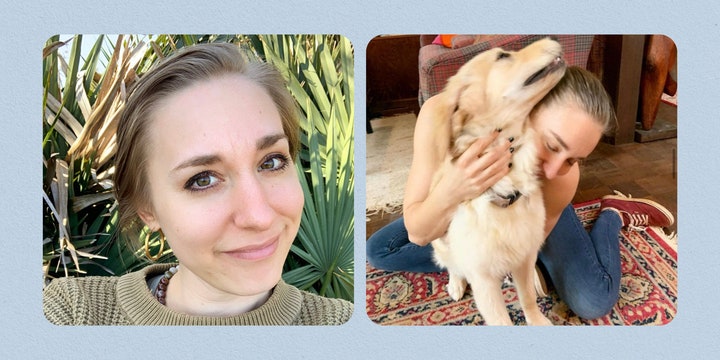It’s jarring to realize at 32 that the way you’ve always experienced the world isn’t quite “normal.” That there’s something you’ve been missing out on without knowing. For all these years, the concept of mental imagery never really made sense to me. When people said things like, “I can still see it vividly,” I thought they were being dramatic. I didn’t think that people could actually picture images floating somewhere in their heads. I was confident that “counting sheep” was just a metaphor. And when my soccer coach told me to visualize myself scoring a goal, I just thought about the concept of scoring a goal. I only had words, descriptions, and details echoing inside my skull.
But then my therapist recently asked me to close my eyes, imagine myself in a safe place, and wait for parts of myself to emerge. As usual, I didn’t really “see” anything. I just responded with something I thought sounded right: I saw myself perched on a boulder in my favorite spot along the Eno River as my childhood self walked up to present-day me in a pair of overalls and a green turtleneck, and a “dark” version of myself representing my depression lurked on the other side of the river. When I relayed these images to her, I felt like I was faking it. As our sessions went on, I tried so hard to get into some altered state where I could “see” these figures; sometimes, after intense focus, I did experience something like fuzzy dream imagery, but that’s it. After I snapped out of it, I longed to conjure up these versions of myself, to process what they meant, to return to them. But most of the time, I saw nothing.
As I’ve now learned, there’s a name for the mind blindness I was experiencing: aphantasia. People with aphantasia cannot form mental images, or the little that they do see is dim and vague. An estimated 1 to 4 in 100 people have aphantasia, and those who do sometimes refer to themselves as aphantasics, aphants, or aphantasiacs. Generally, we self-identify, because there is no way to confirm if someone has it or not. Even for people who participate in studies, the go-to way to “diagnose” aphantasia is via a questionnaire on vividness of visual imagery.
Aphantasia was first described in 1880 by the British psychologist Sir Francis Galton. After asking participants to recall the lighting, definition, and colors of their breakfast table as they sat down to eat that morning, he found that, for some, “the power of visualization was zero.” More than a century later, in 2010, Adam Zeman, MD, a neurologist at the University of Exeter who studies visual imagery, published the case study of a 65-year-old man who suddenly developed aphantasia after a cardiac procedure. In other cases, he noted, people had lost mental imagery after head injuries. As a result of the news coverage around their work, Dr. Zeman and his team received a flood of stories from other people who had similar experiences.
Read the full article here



